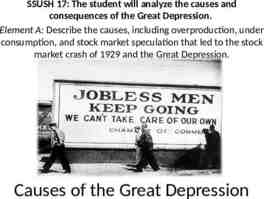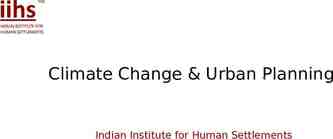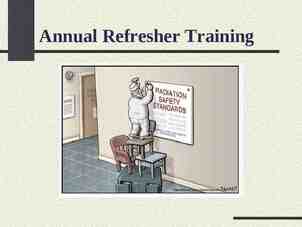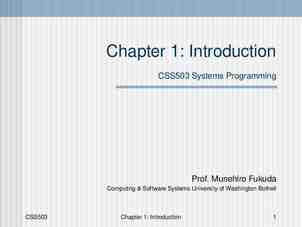Click the icon below to add a picture. Use crop to adjust the
23 Slides774.11 KB
Click the icon below to add a picture. Use crop to adjust the picture’s size and placement. A tutorial is available at uit.no/profil Diamond is a scholar’s best friend Diamond journals and the DIAMAS project Jan Erik Frantsvåg Academic Librarian/Open Access Adviser The University Library UiT The Arctic University of Norway
Diamond OA What is Diamond OA How important is it? What are some of the problems with Diamond OA? What (and who) is the DIAMAS project What do I expect to be the outcome? 10.11.2022 Diamond OA 2
What is Diamond OA A number of slightly different definitions Largely overlapping in the core, that Diamond OA is: Free to read for readers Free to publish in for authors Financed “somehow” without involving authors or readers directly Non-commercial, not-for-profit does actually not count Though commercial or for-profit models are scarce Some such journals published through commercial, for-profit publishers Commercial entities engaged in various parts of the production 10.11.2022 Diamond OA 3
Is Diamond OA important? Diamond OA journals are 73 per cent of journals in DOAJ Then there are a large number of journals not in DOAJ Numbers and definitions vary, but in the 10 000 to 20 000 range I’d go for the lower number My guess: Most of them are Diamond, commercial OA journals get into DOAJ Whatever numbers you use, a vast majority of OA journals are Diamond Among journals listed in DOAJ, Diamond OA journals publish 44 per cent of articles Estimate: 8–9 per cent of all articles published Compared to 10–11 per cent for APC-based journals listed in DOAJ Diamond OA journals are on average smaller than APC-based journals All mega-journals are APC-based 10.11.2022 Diamond OA 4
Importance of Diamond More important in some fields than in other A majority of Diamond journals are in HSS, APC-based are few Nearly 90 per cent of HSS journals in DOAJ are Diamond But large numbers also in Science and Medicine In Medicine, about half of DOAJ journals are Diamond In Science, more than 60 per cent of DOAJ journals are Diamond A recent study on Diamond in Norway: From 2017 to 2020 Diamond OA share of total number of articles increased from 5 per cent to 8 per cent The Diamond OA share grew in all scholarly fields 2019–2020 Diamond OA share larger than APC-based share in Social Sciences and Humanities; 22 per cent vs. 5 per cent in Humanities 10.11.2022 Diamond OA 5
Importance of Diamond (cont.) Historically, scholarly publishing was the remit of the scholarly institutions Commercial entities engaged, but as service providers, not as owners of output This has changed post-WW2 Diamond OA represents this historical tradition Publishers (traditional and OA-publishers) publish 17 per cent of Diamond OA journals Societies publish 11 per cent and Universities 72 per cent Diamond OA utilize the zero cost of distribution fully Thereby realizing the full potential of the scholarship involved Houghton reports: The economic potential of OA lies in the quicker and broader uptake of scholarly results in society at large APC-based OA restrict the access to publishing! 10.11.2022 Diamond OA 6
Some of the problems with Diamond OA The major problem is how Diamond OA is (or rather, isn’t) financed Many rely solely on donated resources Someone to run the necessary software on a university server, by or without agreement with the involved department Staff works for free, inside or outside working hours No ability to use services you need to pay for, e.g., CrossRef (DOIs) Abuse of workforce Overwork, leading to sick leaves etc., or collapse of the journal Using professorial hours for work done better and cheaper by professionals, e.g., typesetting “Cost” is a concept poorly understood in academic circles 10.11.2022 Diamond OA 7
Problems (cont.) If they find funding that gives them cash It takes much resources to find it Financing are often short term – this year, or, at best, next year The needs are poorly understood – the technicalities of publishing is not a subject taught academic or administrative staff The need to pay commercial publishers for the same needs through subscriptions or APCs is taken for granted Amounts are static No ability to grow with increased numbers of submissions Yet another underfunded journal has to be started up somewhere else 10.11.2022 Diamond OA 8
More problems There is a size advantage in publishing – decreasing marginal cost (economies of scale) The more you publish, the smaller the added cost of publishing one more article Competence is a major cost, both training and experience The more you produce, the more articles to divide those costs over Experience makes you do the same again better and more efficiently Publishing involves quite a number of competences and processes academic training does not prepare you for The typical OA Diamond publisher is a university Publishing 1 journal That typically publishes less than 25 articles per year 10.11.2022 Diamond OA 9
An example: Running OJS OJS is the most popular tool for running OA journals Rough numbers estimate 65,000 journals out there on OJS platform Less than 3 journals per OJS installation on average No real limit to how many journals you can run on a single installation 20,000 OJS installations – that all have to be kept upgraded At least 1 week per installation per year to keep it upgraded and wellfunctioning 20,000 work weeks 500 FTE Concentrating, having 30 journals per installation, will save 450 FTEs Numbers show a large number of installations not upgraded for many years 10.11.2022 Diamond OA 10
More problems cont. Plan S study revealed that most DOAJ listed journals were not compliant with Plan S requirements Open access and scholarly, no doubt, but problems with e.g.: Output format (machine-readable [read XML]) Licensing License embedded in output, and machine-readable Author rights Waiver policy DOI Long-term preservation 10.11.2022 Diamond OA 11
More problems cont. (2) Diamond journals fulfil fewer criteria than APC-based Journals published with smaller publisher fulfil fewer criteria than those published with larger publishers There is not much difference between Diamond and APC-based journals when it comes to the 4 policy criteria (license, copyright retention etc.) APC-based journals fulfil most of the 4 technical criteria (more than half fulfil all), Diamond typically fulfil less than half. 10.11.2022 Diamond OA 12
Two lessons Bigger is better Size allows more efficient and less costly publishing, with higher technical standards Dividing competence costs and fixed costs over larger number of articles There is probably an upper limit to efficient size 1 journal and 25 articles is not that upper limit Money solves (some) problems With money, you can choose the less costly alternatives Outsource work instead of abusing scholars or preventing them doing their primary work You can buy the competences and resources you need You can expand according to need 10.11.2022 Diamond OA 13
What to do? Larger journals, i.e., merging smaller journals into larger Could have an effect, e.g., instead of having one small Danish, one small Norwegian and a small Swedish journal in a field, you could merge them into a larger Nordic Reorganization on the publisher level is the real answer Co-operation between institutions to build larger and professional publishing services supporting editors/journals, controlled by the scholarly community Finance non-scholarly activities like typesetting and outsource them Finance paid-for services like XML, DOI and server operations This means costs become visible It definitely does not mean they increase They should actually decrease Modern publishing just cannot be done efficiently on the institutional level! 10.11.2022 Diamond OA 14
Won’t this cost too much? Doing things inefficiently costs! Small calculation: 4,5 million scholarly articles per year (global estimate) Elsevier income 2021 2.649 mill GBP Gives us 589 GBP per article to start with There are more publishers than Elsevier, that we fund The money is there, we need to change the streams Now, that could be tricky But isn’t solving tricky questions the raison d’etre of scholars? Continuing what we do today is no solution to the costs Neither excessively expensive subscriptions, costly APCs nor inefficient institutional publishing 10.11.2022 Diamond OA 15
What is the DIAMAS project An EU-funded project to look at Institutional Publishing Service Providers at the European level Not journals, not publishers, but the ones that serve them and the services they provide Look at institutional publishing Mostly Diamond, but not necessarily Mostly not-for-profit – but again, not necessarily Mapping the present situation Setting quality standards for such services and analyzing gaps between standards and reality Build capacity to share knowledge Suggesting policies to support institutional publishing and ISPSs Look at how such publishing could be made sustainable 10.11.2022 Diamond OA 16
Some background to the project Research showing some of the problems, like the size structure The OA Diamond study documenting the state of Diamond, including problems and needed action, globally and in Europe Studies showing that Diamond is important in many fields Criticism that Plan S fits the commercial publishers the best The Action Plan for Diamond Open Access “to further develop and expand a sustainable, community-driven Diamond OA scholarly communication ecosystem” All pointing to a need to do something The DIAMAS project might be the first step 10.11.2022 Diamond OA 17
The DIAMAS project Developing Institutional Open Access Publishing Models to Advance Scholarly Communication (DIAMAS) 23 institutions from all Europe 7 universities 7 national organizations 9 European/international organizations 3 mill EUR, 36 months Started September 1st, 2022 Johan Rooryck (cOAlition S) and Pierre Mounier (AMU) leading 10.11.2022 Diamond OA 18
10.11.2022 Diamond OA 19
The structure WPs, what they do, WP Lead, time-frame, personnel months WP1 Project management and coordination Aix-Marseille Université 1-36; 54,5 PM WP2 Mapping the European landscape of Institutional Publishing Service Providers UiT The Arctic University of Norway 1-15; 92,3 PM WP3 Setting standards and assessing quality gaps FECYT (Fundación Española para la Ciencia y la Tecnología, F.S.P.) 1-18; 79,3 PM WP4 Capacity building through knowledge sharing OPERAS (Open Access in the European Research Area through scholarly Communication) 6-36; 79,5 PM WP5 Exploring and supporting the sustainability of institutional publishing SPARC Europe (Scholarly Publishing and Academic Resources Coalition) 1-30; 73,5 PM WP6 Providing actionable recommendations for policies and strategies JISC (Joint Information Systems Committee) 12-30; 39 PM WP7 The road to impact: Outreach, dissemination, engagement, exploitation LIBER (Ligue des Bibliothèques Européennes de Recherche) 1-36; 63,5 PM Total 451,6 PM 10.11.2022 Diamond OA 20
What do I hope for as outcomes? A better understanding of who the actors are, and how they interact and interconnect Political support in high places for recognition and long-term financial sustainability Institutional and inter-institutional: Willingness to pledge long-term funding Willingness to create shared resources and activities Willingness to divert funding from commercial publishers’ products to Diamond publishing activities Unwillingness to be free-riders in a Diamond OA world, letting the others pay 10.11.2022 Diamond OA 21
You’ll find me [email protected] https://scholar.google.com/citations?user 8NHRTz8AAAAJ&hl no&oi ao http://orcid.org/0000-0003-3413-8799 http://tinyurl.com/6rycjns Usually also at the Munin conference, this year November 29–December 1 https://site.uit.no/muninconf/ Registration deadline is November 15, i.e. the coming Tuesday! 10.11.2022 Diamond OA 22
Some references used here: Wikipedia article “Diamond open access” https://en.wikipedia.org/wiki/Diamond open access Bosman, Jeroen, Frantsvåg, Jan Erik, Kramer, Bianca, Langlais, Pierre-Carl, & Proudman, Vanessa. (2021). OA Diamond Journals Study. Part 1: Findings. Zenodo. https://doi.org/10.5281/zenodo.4558704 Frantsvåg, J.E. Diamond Open Access in Norway 2017–2020. Publications 2022, 10, 13. https://doi.org/10.3390/publications10010013 Frantsvåg, J.E.; Strømme, T.E. Few Open Access Journals Are Compliant with Plan S. Publications 2019, 7, 26. https://doi.org/10.3390/publications7020026 Khanna, Saurabh; Raoni, Jonas; Smecher, Alec; Alperin, Juan Pablo; Ball, Jon, 2021, "Details of publications using software by the Public Knowledge Project", https://doi.org/10.7910/DVN/OCZNVY, Harvard Dataverse, V1, UNF:6:LIikqmU6NzRu2UKEHiplfw [fileUNF] Khanna , S., Ball, J., Alperin, J. P., & Willinsky, J. (2022). Recalibrating the Scope of Scholarly Publishing: A Modest Step in a Vast Decolonization Process. In SciELO Preprints. https://doi.org/10.1590/SciELOPreprints.4729 (Original work published 2022) John Houghton, Peter Sheehan, “Estimating the Potential Impacts of Open Access to Research Findings”, Economic Analysis and Policy, Volume 39, Issue 1, 2009, pp 127-142, https://doi.org/10.1016/S0313-5926(09)50048-3 10.11.2022 Diamond OA 23






